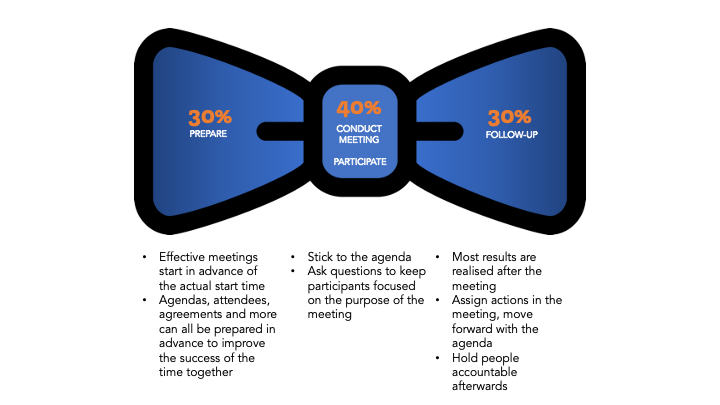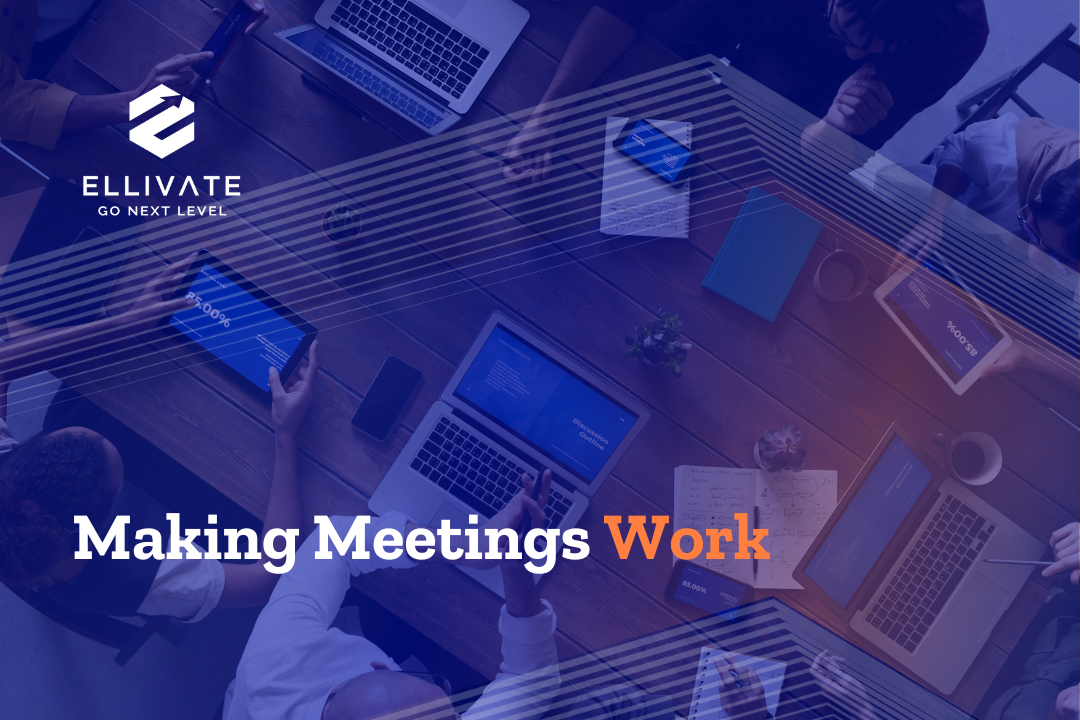Meetings are essential to business success and productivity, but they often become hours-long distractions that accomplish little or nothing in the long run. Nearly 70% of employees think that update meetings are unproductive.
It’s easy to get distracted when it’s just you and your colleagues staring at your phones while you wait for something exciting to happen—and it’s also easy to overschedule your day, making it impossible to focus on what’s important.
Here are some tips and strategies to help you ensure that your meetings are as productive as possible.
The bowtie method
The bowtie method is a way to make meetings more efficient by ensuring that all participants are focused on the same topic throughout. It’s also much less tedious than other meeting structures, which means that people will be more engaged in their work and keep their minds sharp.
When you’re working with others on a task or project, it can be easy for your focus to get lost as you switch from talking about one thing to another—but if you follow this method, everyone will be on track and focused on completing their tasks accordingly.
The bowtie method divides the meeting into three sections. Prepare. Participate. Follow-up.

Prepare: Do most of the work upfront
The most important thing you can do to make any meeting work is doing your homework. Write out your agenda for the meeting beforehand so that you have structure planned out before it even starts.
This ensures that everyone has some idea of what’s going on and what needs to happen during each part of the meeting; otherwise, people might wander off topic or get confused about what they’re doing.
In a psychology survey, 50% of employees think meetings are time wasters. This often happens when there is no agenda, and people try to accomplish too many things simultaneously.
Preparation also helps to clarify the purpose. Knowing why you’re having the meeting will help ensure everyone stays on track and keeps their priorities in mind. Make sure everyone understands what they are supposed to be doing and why they are doing it.
The meeting focus
You may think that it’s your job to make meetings work, but as the meeting leader, you should expect and encourage others to help you. The most important thing you can do is to make sure that the focus of the meeting is clear.
If people know what they need to accomplish, they can bring more effectiveness to their roles.
Ensure the meeting is relevant to the topic
Meetings are great for sharing ideas, but they can also serve as a valuable communication tool if used appropriately. If there’s no apparent reason why your team needs to meet in person, take a step back and rethink whether it might be better handled via email or phone calls instead (or at least consider having one of these follow-up discussions after getting everyone on board).
Use an agenda or set of notes as a guide for what needs discussing and how long each item should take, so people stay focused on getting through all discussion points within their allotted time frame.
Make sure any action items from previous meetings are added so new members know where they fit into the process; this helps them feel involved and shows respect for their time investment by keeping things moving forward quickly.
Stop long tangents before they start—as soon as there’s an offshoot conversation between two people who get distracted from what was initially being discussed by one side.
Assign actions instead of just solving problems—if someone comes up with a brilliant idea during your meeting, instead of letting them go off into their own world without actually doing anything about it right then (and maybe never again), ask how they plan on making sure this gets done now rather than later.
Follow up after each meeting
It’s not just about the meeting itself. The outcome of a meeting is often realized after the event when people return to their offices and get on with their work. Effective meetings capture actions and items to process after people leave the room—now the real work is accomplished.
The follow-up should be done in good time: within 24 hours is ideal, but certainly no later than three days later (or even one day if you can manage it). If you don’t have time during the week or your team work remotely, use weekends or evenings to get everything done.
Best practices for meetings
Make sure your meeting has a clear purpose and objective. Keep in mind that the primary goal of any meeting is to share information and decide on an issue. Once you have agreed upon what needs to happen next, make sure everyone involved knows what to do and when they need to accomplish it. If not, then it’s likely that nothing will ever get done!
Be selective with who attends your meetings. This may sound obvious, but there are many times when people are invited into meetings because they “have” to be there, or all hands must be on deck. If someone doesn’t have anything relevant or meaningful to contribute, then perhaps this person should be left out of future gatherings until their contributions become more valuable for everyone involved (and vice versa).
When possible, try not having too many attendees because this makes it difficult for everyone else around the table who might want their voices heard during discussion periods (or worse yet – silence altogether!).
Not all meetings need to last an hour
If you’re meeting with someone remote or have a colleague in another office, the whole process can be expedited by having shorter meetings. If your schedule allows it, try and conduct the meeting standing up – it will be much quicker and likely have more energy.

Know who you need to invite-not everyone has to be there
To avoid wasting time, you should know who needs to be there and who doesn’t.
For example, if you’re scheduling a meeting with your boss and another manager you work closely with, only invite the one who will add value to the meeting. If neither of them has anything relevant to say, don’t bother asking either of them in the first place!
Look for data, not assertions
The most important thing you can do is look for data, not assertions. This isn’t just a good idea—it’s critical to getting your meetings on track. Data is king because it’s objective, factual, and the best way to make decisions. You may have no data (or not enough), in which case you’ll need to use the meeting to define what data is required and who can gather and validate it.
Believe the consensus
Consensus means that everyone in the meeting has to be on board before the group can move forward with anything. It’s not always easy to get everyone on the same page—and it’s not always possible for all parties involved. Still, if you want to be effective as a group and ensure that everyone has their say, then consensus is an important tool for getting there.
Consensus isn’t just about getting people from different backgrounds and cultures into one room so they can talk about their differences; it’s also about agreeing on what steps need to be taken next once those conversations are finished (or even during them).
Final words
Meetings are a necessary part of the workday. But they can also be an incredibly ineffective use of your time and energy if you don’t do them right. If you follow these tips, you should be able to make meetings more productive while bringing efficiency into your workplace.
And that means less wasted time and more finished projects at the end of each day!
We can help you improve the efficiency and effectiveness of your meetings. If you’re ready to take your business to new heights, contact us today and let us show you what we can do.




